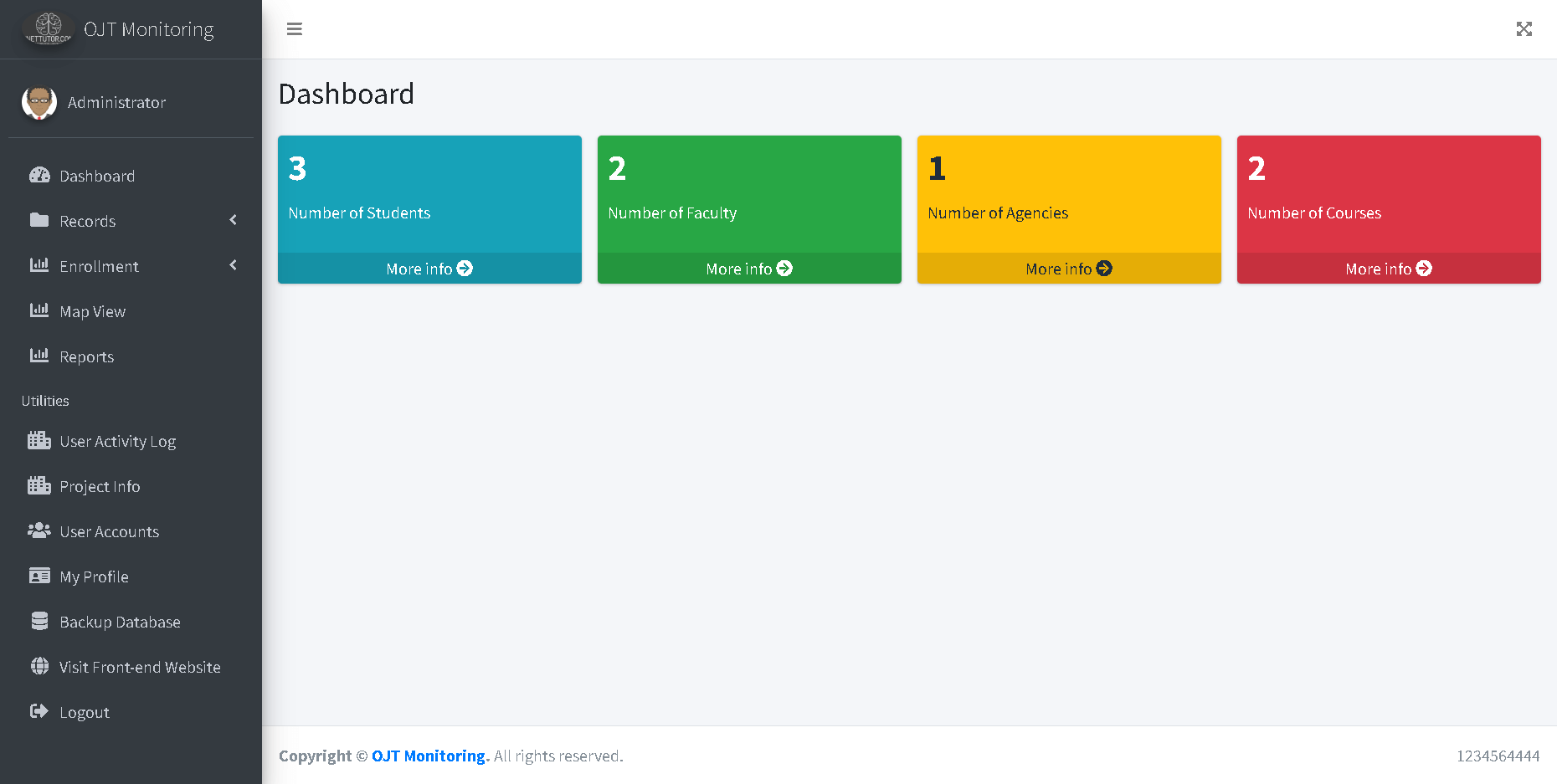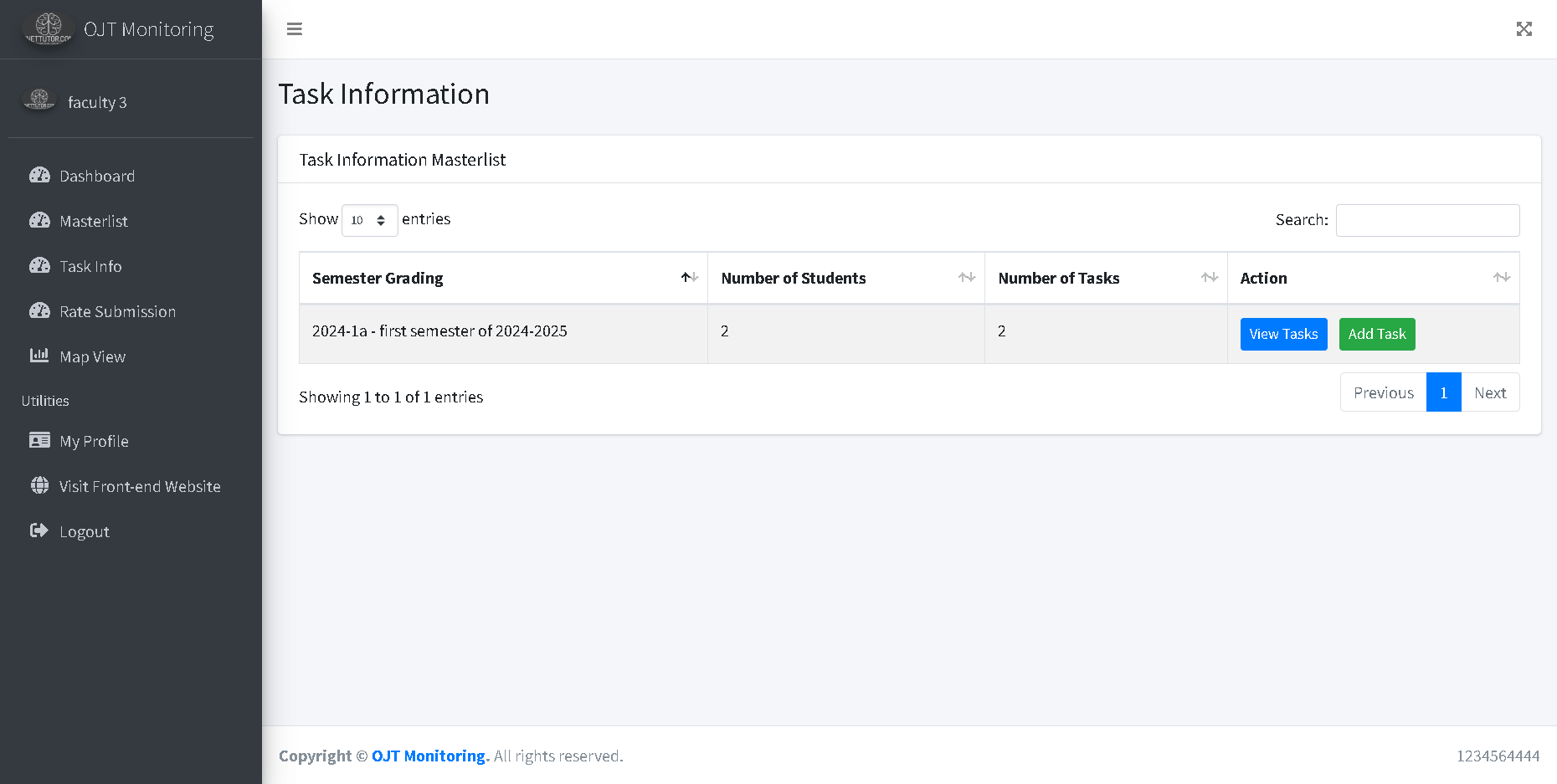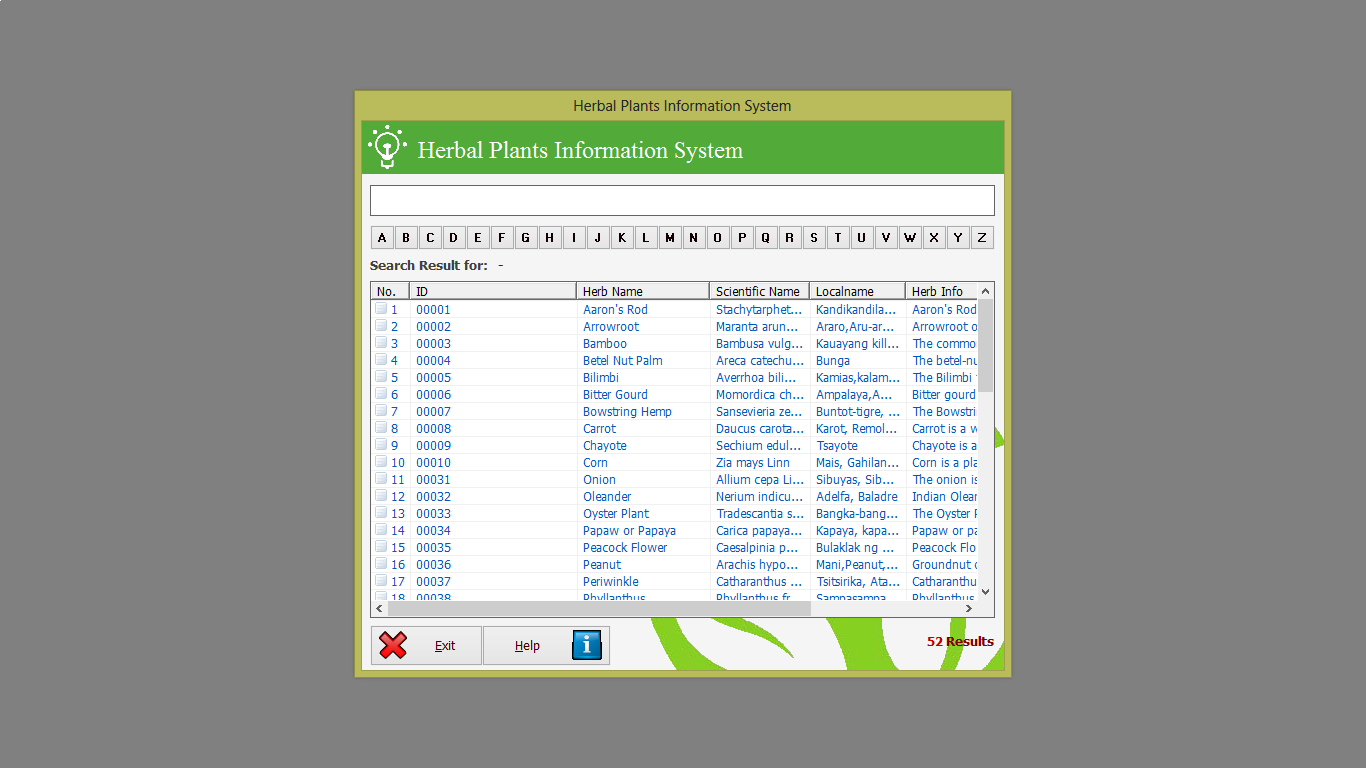OJT Monitoring System with Mapping using PHP and Leaflet
Introduction
Table of Contents
On-the-Job Training (OJT) programs are crucial for professional development, providing students with hands-on experience in their chosen fields. However, traditional methods of monitoring these programs often involve cumbersome paperwork, inefficient tracking, and limited communication between students, mentors, and administrators.
An OJT Monitoring System with Mapping addresses these challenges by leveraging modern technology to streamline the entire process. This system uses PHP for backend development and MySQL for database management, ensuring a robust and efficient platform. Additionally, Leaflet is integrated for interactive mapping, allowing for easy visualization of employer locations and student placements. This combination of technologies creates a comprehensive solution that enhances the management and monitoring of OJT programs, benefiting all stakeholders involved.
Objectives of the System
The development of the OJT Monitoring System with Mapping using PHP and Leaflet aims to achieve several key objectives. These objectives are designed to address the challenges faced in traditional OJT monitoring methods and enhance the overall management and effectiveness of OJT programs. Let’s explore the main goals of this system:
- Streamline the tracking and monitoring process of OJT programs: The system aims to automate and simplify the monitoring and tracking of OJT participants’ progress, tasks completed, and hours rendered. By digitizing and centralizing these records, the system eliminates the need for manual documentation and reduces the risk of data inconsistencies.
- Enhance communication between students, mentors, and administrators: The system provides a platform for seamless communication and collaboration between OJT participants, their mentors, and program administrators. This facilitates real-time updates, feedback, and support, ensuring a more efficient and productive OJT experience for all stakeholders.
- Expected benefits for educational institutions, students, and employers: The OJT Monitoring System offers numerous benefits to different stakeholders. Educational institutions can improve the management and evaluation of OJT programs, leading to better program outcomes and student performance. Students benefit from improved engagement, support, and access to their OJT records, enhancing their learning experience. Employers gain access to accurate and up-to-date information on OJT participants, enabling better resource allocation and evaluation of potential hires.
- Improved efficiency and accuracy in monitoring: By automating the monitoring process, the system reduces manual effort, minimizes errors, and ensures consistent and reliable data. This improves the efficiency and accuracy of tracking OJT participants’ progress, making it easier for program coordinators to evaluate their performance.
- Better engagement and support for students: The system provides students with a user-friendly interface to access their OJT records, submit reports, and communicate with their mentors and program coordinators. This enhances their engagement, encourages active participation, and provides them with the necessary support throughout their OJT journey.
- Long-term impact on the quality of OJT programs and student performance: By implementing an efficient and effective OJT Monitoring System, educational institutions can enhance the overall quality of their OJT programs. The system’s features, such as progress tracking, feedback mechanisms, and data analysis, contribute to continuous improvement and better alignment of OJT programs with industry requirements. This, in turn, positively impacts student performance and employability.
By achieving these objectives, the OJT Monitoring System with Mapping using PHP and Leaflet aims to revolutionize the management of OJT programs, benefiting educational institutions, students, and employers alike. In the following sections, we will explore the implementation and features of this system in more detail, highlighting how PHP and Leaflet contribute to its success.
Features of the System
The OJT Monitoring System with Mapping using PHP and Leaflet offers a range of features designed to streamline the tracking and monitoring process of OJT programs, enhance communication between stakeholders, and provide numerous benefits for educational institutions, students, and employers. Let’s explore the key features of this system:
- Admin Functionality:
- Encoding of semester grading information, course grade information, faculty/coordinator information, student information, and cooperating agency details.
- Addition of a view map feature in the list page and a dedicated view map page for coordinating agencies.
- Enrollment of students to faculty and school year.
- Faculty Functionality:
- View masterlist per school year, providing a comprehensive overview of OJT participants.
- Creation of tasks for OJT participants.
- Assignment of tasks to the masterlist, ensuring clear task allocation and tracking.
- View and rate task submissions, facilitating efficient evaluation and feedback.
- Student Functionality:
- View assigned tasks, enabling students to stay updated on their responsibilities.
- Upload task submissions, providing a convenient and centralized platform for submitting work.
- Organization Functionality:
- Ability to rate OJT participants, allowing organizations to provide feedback and evaluate the performance of students.
These features work together to improve the efficiency and accuracy of OJT program monitoring. The system simplifies administrative tasks, enhances communication between stakeholders, and provides real-time insights into the progress and performance of OJT participants.By implementing the OJT Monitoring System with Mapping, educational institutions can expect improved efficiency in managing OJT programs, better engagement and support for students, and long-term impact on the quality of OJT programs and student performance. Employers benefit from accurate information on OJT participants, enabling better resource allocation and evaluation of potential hires.
Download and Demo
bookmark this page for updates


Future Enhancements
The OJT Monitoring System with Mapping offers a robust foundation for managing and tracking OJT programs. However, as technology continues to evolve, so too do the possibilities for this platform. Here, we explore some exciting future enhancements that can further revolutionize the OJT experience:
- Mobile App Integration: To keep up with the increasing demand for mobility and accessibility, integrating the OJT Monitoring System with a mobile app will be a significant enhancement. This will allow users—students, faculty, and administrators—to access the system on-the-go. With a mobile app, students can upload tasks, check their assignments, and communicate with faculty from anywhere. Faculty can assign tasks, review submissions, and provide feedback without being tied to their desks. Admins can monitor the overall progress and manage data efficiently. This integration will ensure that the system remains user-friendly and accessible at all times.
- Advanced Analytics: Integrating advanced data analytics tools into the system will provide deeper insights and better reporting capabilities. By analyzing the collected data, institutions can identify trends, monitor performance, and make data-driven decisions to enhance the OJT program. Advanced analytics can help in tracking student progress, identifying areas for improvement, and measuring the effectiveness of the training provided by different cooperating agencies. This will lead to a more informed and proactive approach to managing OJT programs.
- Additional Communication Tools: Incorporating chat and messaging features will facilitate direct and real-time communication between students, faculty, and administrators. This will enhance collaboration and ensure that any issues or queries are addressed promptly. Real-time communication tools can also be used for instant feedback, notifications, and updates, making the system more interactive and responsive. This will greatly improve the overall experience for all users, fostering a more connected and supportive OJT environment.
- Expanded Reporting Options: Providing more detailed and customizable report generation options will allow institutions to better analyze and present their data. This could include custom filters, graphical representations, and the ability to generate specific reports for different stakeholders. Expanded reporting options will enable administrators to generate comprehensive reports on student performance, faculty effectiveness, and cooperating agency contributions. These reports can be used for internal assessments, accreditation purposes, and sharing with external stakeholders, thereby enhancing transparency and accountability.
Conclusion
The OJT Monitoring System with Mapping, built with PHP and Leaflet, addresses the challenges of traditional OJT programs by streamlining data management, communication, and monitoring. This system empowers admins, faculty, students, and potentially even cooperating agencies, with features like task management, progress tracking, and optional mapping functionalities. By embracing digital solutions like this OJT Monitoring System, educational institutions can foster a more efficient, data-driven, and ultimately, a more supportive learning environment for students throughout their OJT programs. We encourage you to explore the possibilities of similar systems and discover how technology can revolutionize the way you manage and deliver OJT programs.
We invite you to share your thoughts or experiences with OJT monitoring systems in the comments below. Your feedback and suggestions are invaluable in helping us improve and enhance the OJT Monitoring System with Mapping. Let us know how digital solutions have impacted your OJT programs and any features or improvements you would like to see in future versions. Your input can drive the development of even more efficient and supportive tools for educational institutions and students alike.
Readers are also interested in:
- 60 Best ER Diagram Examples
- List of 45 IT Capstone Project on Crime and Disaster Management
- 70+ Free and New Capstone Project Titles
- Android and Mobile Based List of Capstone and Thesis Projects
- Thesis System for IT and Computer Science
You may visit our Facebook page for more information, inquiries, and comments. Please subscribe also to our YouTube Channel to receive free capstone projects resources and computer programming tutorials.
Hire our team to do the project.


